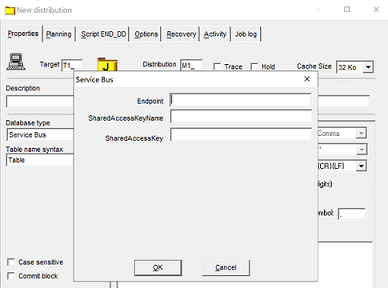Configuring Azure Service Bus connector
The configuration of Azure Service Bus target connector is performed on the source machine, when distributing a target table.
Procedure
Did this page help you?
If you find any issues with this page or its content – a typo, a missing step, or a technical error – let us know how we can improve!

